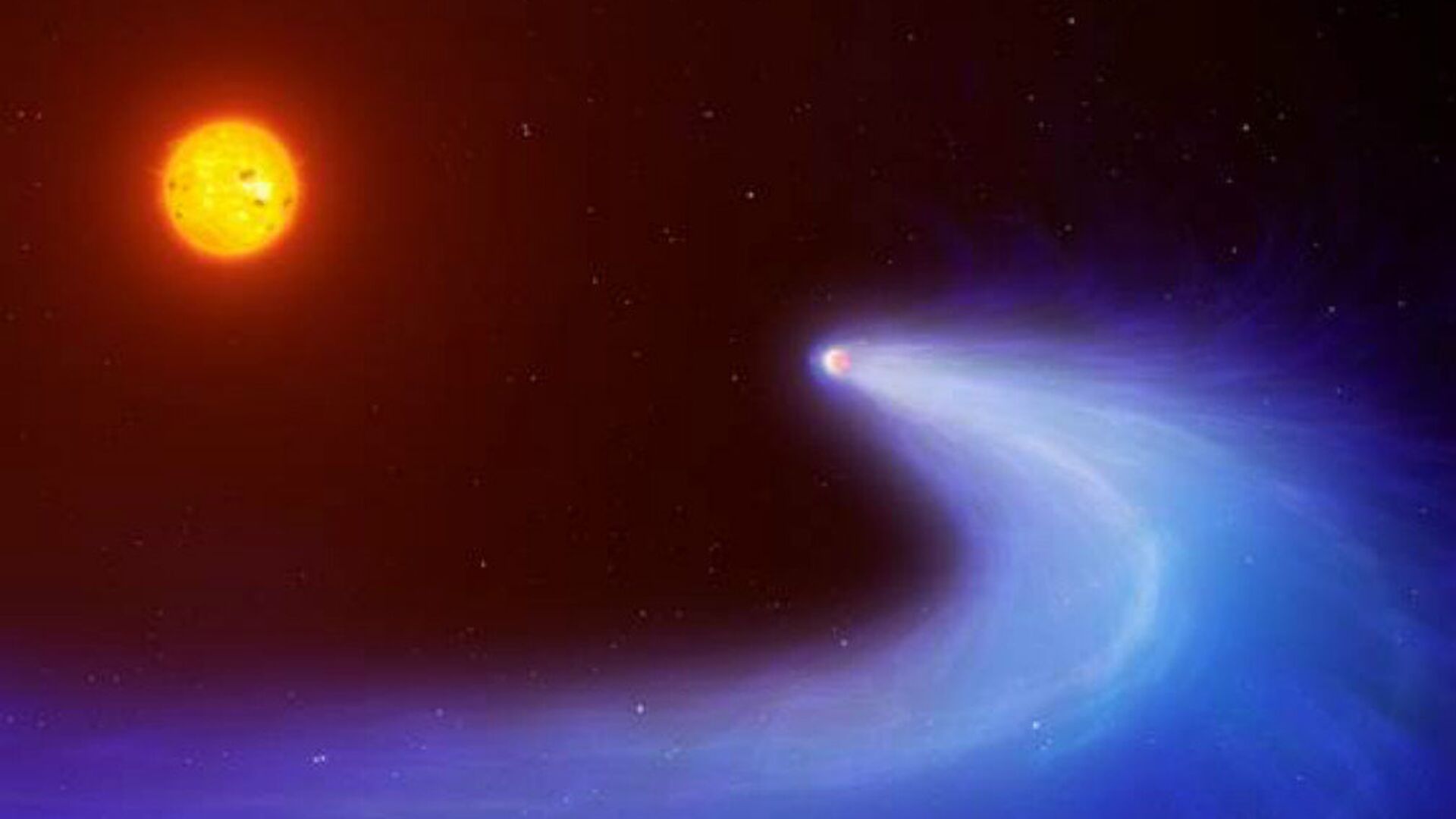https://sputnikglobe.com/20220209/dont-look-up-distantly-orbiting-megacomet-confirmed-at-massive-85-miles-across-1092864149.html
Don’t Look Up! Distantly-Orbiting ‘Megacomet’ Confirmed at Massive 85 Miles Across
Don’t Look Up! Distantly-Orbiting ‘Megacomet’ Confirmed at Massive 85 Miles Across
Sputnik International
A suspected massive comet discovered years ago on the fringes of our solar system has finally been confirmed to be one of the largest comets ever spotted... 09.02.2022, Sputnik International
2022-02-09T00:06+0000
2022-02-09T00:06+0000
2022-02-09T00:06+0000
comet
astronomy
oort cloud
https://cdn1.img.sputnikglobe.com/img/102381/80/1023818089_0:14:1009:582_1920x0_80_0_0_9aea870ef975255170855991e2e5dae3.jpg
Comet 2014 UN271/(Bernardinelli-Bernstein) was first spotted eight years ago by two scientists, Pedro Bernardinelli and Gary Bernstein, who were looking through Dark Energy Survey photos taken by the Dark Energy Camera at the Cerro Tololo Inter-American Observatory (CTIO) in Chile. It was spotted at roughly the same distance from the Sun as Neptune’s orbit, the furthest a comet has ever been discovered, and its size was estimated at between 60 and 230 miles wide.Comets are icy objects that orbit the Sun at typically highly elongated orbits, zipping in close to the Sun and showing off their characteristic bright tails before being flung to the outer edges of the solar system, sometimes for thousands of years. However, Bernardinelli-Bernstein never comes closer to the Sun than Saturn’s orbit, which is 9.5 times the distance from the Sun to Earth. Its distance has also made it difficult to study, which is why Dr. Emmanuel Lellouch of the Paris Observatory only confirmed the comet’s size last week, clocking it at 137 kilometers (85 miles) across.While it’s not the biggest comet ever found - that honor goes to 2060 Chiron, another distantly-orbiting comet that’s 120 miles wide and never gets closer than Uranus’ orbit - comet Bernardinelli-Bernstein is among the biggest, as most tend to be just a few hundred feet to a few miles across. However, Bernardinelli-Bernstein is the largest object ever discovered from the Oort Cloud, an extremely distant group of trillions of rocks and comets caught in the outer reaches of the Sun’s gravity.Some have described the comet as planet-sized, but compared to all but the smallest planetoids and moons in the Solar System, Bernardinelli-Bernstein is tiny. The dwarf planet Ceres, the largest object in the Asteroid Belt, is 583 miles across, and Charon, the moon of the distant dwarf planet Pluto, is 753 miles wide. Sedna, a small dwarf planet wandering the Kuiper Belt beyond Neptune, is about 600 miles wide.That said, Bernardinelli-Bernstein is about 10 times the size of the Chicxulub comet that caused the extinction of the dinosaurs when it struck Earth around 65 million years ago.
oort cloud
Sputnik International
feedback@sputniknews.com
+74956456601
MIA „Rossiya Segodnya“
2022
News
en_EN
Sputnik International
feedback@sputniknews.com
+74956456601
MIA „Rossiya Segodnya“
Sputnik International
feedback@sputniknews.com
+74956456601
MIA „Rossiya Segodnya“
comet, astronomy, oort cloud
comet, astronomy, oort cloud
Don’t Look Up! Distantly-Orbiting ‘Megacomet’ Confirmed at Massive 85 Miles Across
A suspected massive comet discovered years ago on the fringes of our solar system has finally been confirmed to be one of the largest comets ever spotted. Don’t worry, though: it isn’t coming anywhere near Earth.
Comet 2014 UN271/(Bernardinelli-Bernstein) was first
spotted eight years ago by two scientists, Pedro Bernardinelli and Gary Bernstein, who were looking through Dark Energy Survey photos taken by the Dark Energy Camera at the Cerro Tololo Inter-American Observatory (CTIO) in Chile. It was spotted at roughly the same distance from the Sun as Neptune’s orbit, the furthest a comet has ever been discovered, and its size was estimated at between 60 and 230 miles wide.
Comets are icy objects that orbit the Sun at typically highly elongated orbits, zipping in close to the Sun and showing off their characteristic bright tails before being flung to the outer edges of the solar system, sometimes for thousands of years. However, Bernardinelli-Bernstein never comes closer to the Sun than Saturn’s orbit, which is 9.5 times the distance from the Sun to Earth.
So don’t worry, it won’t ever be anywhere near us - but it will never be visible to the naked eye, either, or produce a beautiful tail.
Its distance has also made it difficult to study, which is why Dr. Emmanuel Lellouch of the Paris Observatory only
confirmed the comet’s size last week, clocking it at 137 kilometers (85 miles) across.
While it’s not the biggest comet ever found - that honor goes to 2060 Chiron, another distantly-orbiting comet that’s 120 miles wide and never gets closer than Uranus’ orbit - comet Bernardinelli-Bernstein is among the biggest, as most tend to be just a few hundred feet to a few miles across. However, Bernardinelli-Bernstein is the largest object ever discovered from the Oort Cloud, an extremely distant group of
trillions of rocks and comets caught in the outer reaches of the Sun’s gravity.
Some have described the comet as planet-sized, but compared to all but the smallest planetoids and moons in the Solar System, Bernardinelli-Bernstein is tiny. The
dwarf planet Ceres, the largest object in the Asteroid Belt, is 583 miles across, and Charon, the moon of the distant dwarf planet Pluto, is 753 miles wide. Sedna, a small dwarf planet wandering the Kuiper Belt beyond Neptune, is about 600 miles wide.
That said, Bernardinelli-Bernstein is about 10 times the size of the
Chicxulub comet that caused the extinction of the dinosaurs when it struck Earth around 65 million years ago.

